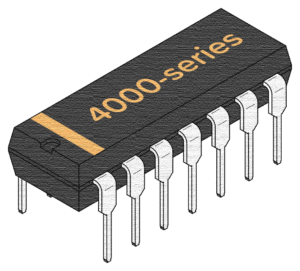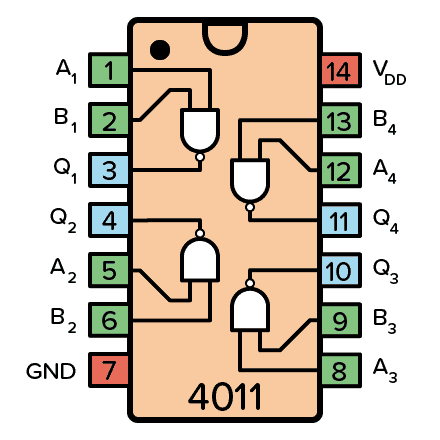
The CD4011 is a CMOS chip with four NAND gates. Because each gate has two inputs and it has 4 gates inside, it’s usually called a Quad 2-Input NAND Gate.
A NAND gate combines the functionality of AND and NOT gates. It gives a LOW output only when all inputs are HIGH; otherwise, the output is HIGH.
Pin Overview
| Pin Name | Pin # | Type | Description |
|---|---|---|---|
| VDD | 14 | Power | Supply Voltage (+3 to +15V) |
| GND | 7 | Power | Ground (0V) |
| A1 to A4 | 1, 5, 8, 12 | Input | Inputs A of the four NAND gates |
| B1 to B4 | 2, 6, 9, 13 | Input | Inputs B of the four NAND gates |
| Q1 to Q4 | 3, 4, 10, 11 | Output | Outputs from the four NAND gates |
What is a NAND gate?
A NAND gate is a logic gate that works like an AND gate with a NOT gate on the output. Therefore it’s often called NOT-AND.
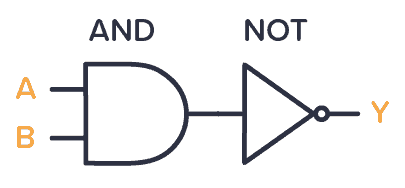
Any output from the AND gate is inverted by the NOT gate. So, simply put, a NAND gate is a logic gate that gives a LOW output only when all inputs are HIGH as shown in the truth table below.
| Input A | Input B | Output Q |
|---|---|---|
| 0 | 0 | 1 |
| 1 | 0 | 1 |
| 0 | 1 | 1 |
| 1 | 1 | 0 |
NAND gates are used to design a wide range of logic functions, including SR Latches and D Flip-Flops.
Often you’ll see circuit examples where the two inputs are connected to create one input. This converts the NAND into becoming a NOT gate that inverts the input.
How To Use the CD4011
First of all, you need a power supply voltage of 3 to 15V. Some versions of the chip support up to 20V. Check the datasheet of your version of the chip for exact values.
To be able to use any of the NAND gates in the chip, you need to first connect the VDD pin to the positive supply terminal and the GND pin to the negative supply terminal.
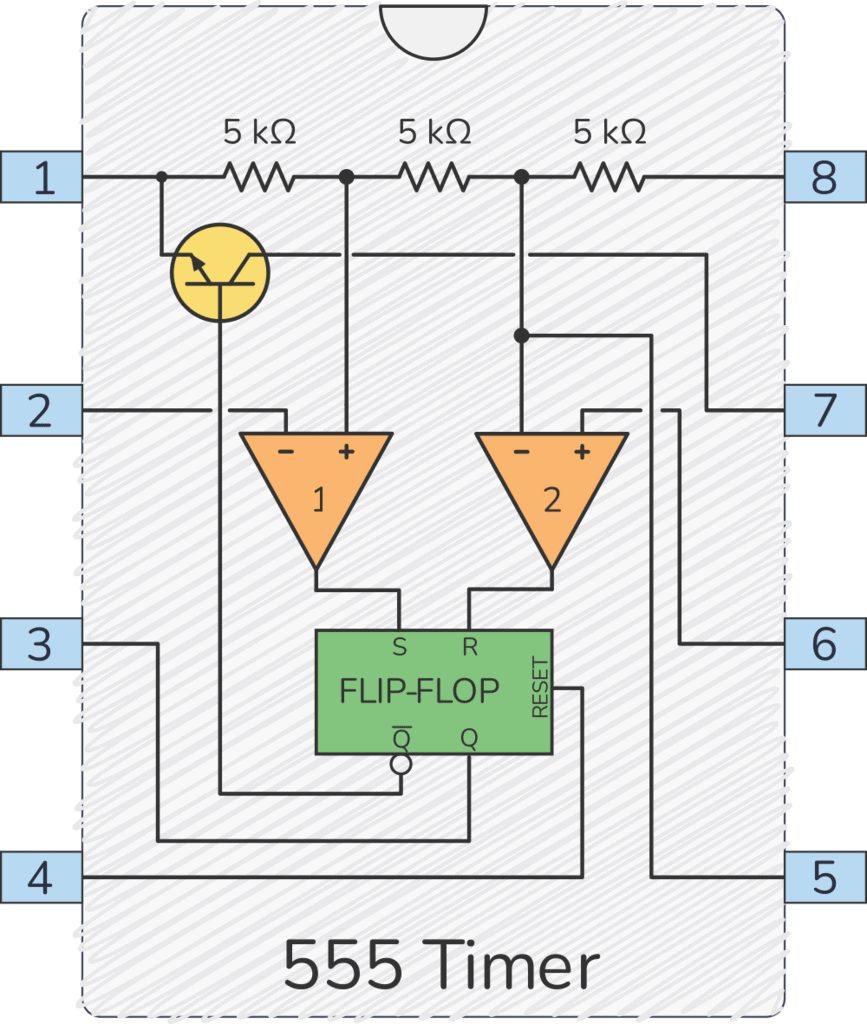
Get the 555 Timer Cheatsheet
A super helpful reference that makes it easy to design circuits, so that you can build oscillators, timer circuits, and more in no time.
The A and B pins are the inputs to the four NAND gates in the IC.
The Q pins are the outputs from the NAND gates.
CD4011 Example Circuit – Touch Switches
Here is a practical example that you can build with NAND gates.
In the following circuit, you have two touch sensors; one for turning the LED on, the other for turning the LED off.
The circuit uses two NAND gates set up as a latch that is being set or reset by the two touch sensors.
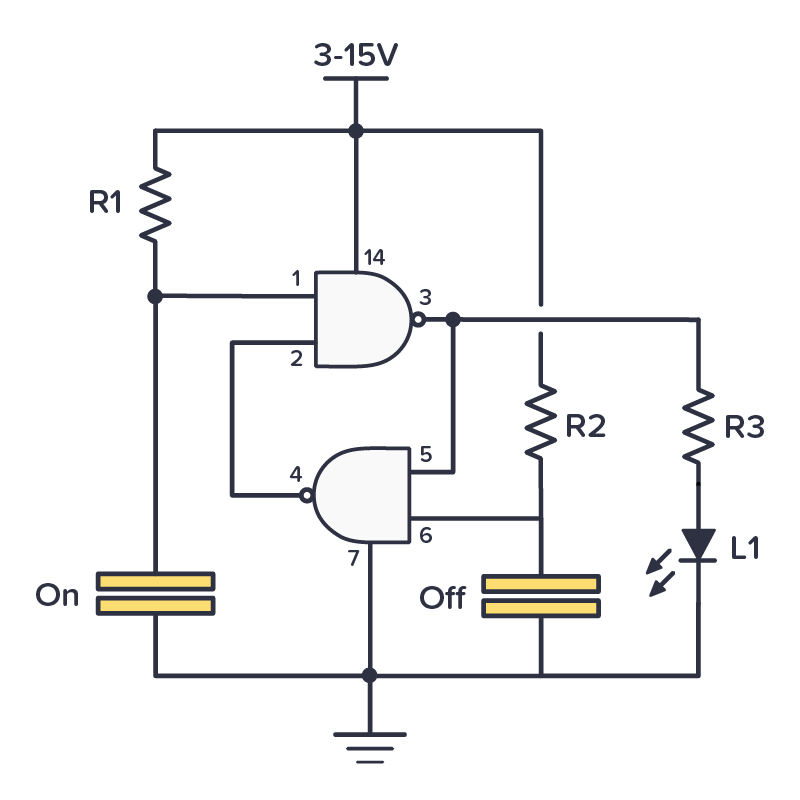
To build this you’ll need:
- An LED (L1)
- A chip with NAND gates such as the CD4011BE
- 3 x 10 kΩ resistors (R1-R3)
- 2 x Two metal plates close together to create the touch sensor
Alternatives and Equivalents for CD4011
You likely find the 4011 IC marked as CD4011, NTE4011, MC14011, HCF4011, TC4011, or HEF4011. Usually with a few extra characters at the end (Ex: CD4011BE).
This has to do with the manufacturer of the chip and the technology used. But the functionality and the pins are the same.
If they don’t have any of these chips in your local electronics store, check out my list of online stores where you can find components and tools for all your electronics projects.
Can’t find the 4011? Then try one of the following IC alternatives with 2-input NAND gates:
- 4572: Single NAND gate (plus 1x NOR and 4x NOT gates)
- 4093: Quad 2-input NAND gate, Schmitt trigger inputs
- 40107: Dual 2-input NAND gate
- 74HC00: Quad 2-input NAND gate
- 74HC01: Quad 2-input NAND gate
- 74HC03: Quad 2-input NAND gate
4011 Datasheet
Download the PDF datasheet for the IC 4011 here:
CD4011B (Texas Instruments)
HEF4011B (Nexperia)
Go back to the full overview of the 4000-series integrated circuits

Get the 555 Timer Cheatsheet
A super helpful reference that makes it easy to design circuits, so that you can build oscillators, timer circuits, and more in no time.

